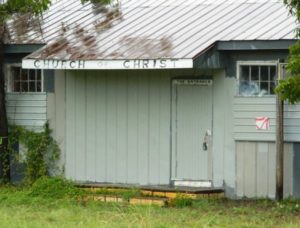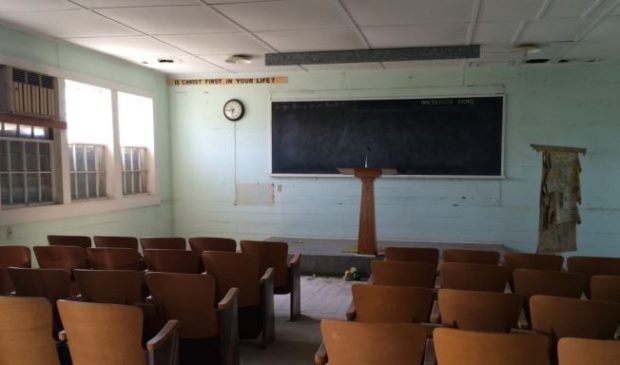County considers calls to preserve Montopolis Negro School building
Wednesday, December 21, 2016 by
Caleb Pritchard A group of activists scurrying to preserve a segregation-era schoolhouse brought their case before the Travis County Commissioners Court on Tuesday.
Led by East Austin advocates Fred McGhee and Susana Almanza, the group urged the court to help protect the Montopolis Negro School on Montopolis Drive just east of U.S. Highway 183.
Austin Stowell of KEEP Real Estate recently acquired the land on which the abandoned structure sits and has plans to build single-family homes and possibly commercial space on the property.
McGhee told the court that his desire for the building is to “preserve it intact and in place and manage it as a park and a museum.”
In addition to serving as the current president of the Montopolis Neighborhood Association, Almanza also sits on the neighborhood’s contact team. “And the contact team has voted to try and preserve the Negro school – not just the building, but the entire property,” she explained to the commissioners. “Because, as we stated earlier, there were events, Juneteenth (and other) different events that were held at the property.”
Austin Neighborhoods Council President David King added his group’s weight to the effort, saying, “We’ve already seen that African-Americans have been displaced from their community, and now, if we don’t act, their history will be wiped out. It’s as though they were never here.”
According to McGhee’s timeline, the schoolhouse was a former Army barracks from nearby Fort Swift that was first installed on the property in 1935. Less than 30 years later, in 1962, the Austin Independent School District closed the school. In 1967, the building was converted into a church. The city condemned it in the late ’90s with plans to use the ground beneath it for right-of-way to break up the superblock bound by Montopolis Drive on the east and Kemp Street to its west.

Stowell told the Austin Monitor that he has no desire to demolish the building, despite obtaining a permit from the city. Stowell won that document in November when the Historic Landmark Commission came up short of the necessary supermajority to grant landmark status to the building.
Stowell said that he would like to move the building either across the property or to a new site altogether. He added, “There is a scenario where we could leave it where it is, but that would require (the Austin Transportation Department) to agree to relinquish the right-of-way on the site.”
Even though the county has no legal authority to protect the building or the property from Stowell’s plans to add housing to the neighborhood, County Judge Sarah Eckhardt indicated a willingness to use the court’s cachet to intervene on the activists’ behalf.
“Since we don’t have zoning authority – and that would be the common fix for a circumstance like this – let us do a little research and see how we can be the best helpmate (to the city) on this issue,” Eckhardt said.
The court had before it a draft resolution that would have formally recommended that City Council protect the building and property, give it landmark status and find some way to pay for the costs of operating it as a park and museum. However, Eckhardt postponed a vote on that measure until the court’s Jan. 3 voting session.
Photos by Dr. Fred McGhee, courtesy of the city of Austin. This story has been changed after publication to correct a typo..
The Austin Monitor’s work is made possible by donations from the community. Though our reporting covers donors from time to time, we are careful to keep business and editorial efforts separate while maintaining transparency. A complete list of donors is available here, and our code of ethics is explained here.
You're a community leader
And we’re honored you look to us for serious, in-depth news. You know a strong community needs local and dedicated watchdog reporting. We’re here for you and that won’t change. Now will you take the powerful next step and support our nonprofit news organization?












